Trespasser: Jurassic Park is such an outrageously fantastic game.
It’s as much a primeval, primordial walking sim as it is a survival-lite FPS, served on a revolutionary bed of fully-realised physics. It has wonderful environmental story-telling; audiologs and internal monologues that don’t strain atmosphere. It offers a natural sense of physicality. Hell, it did the two-weapon limit before Halo.
Trespasser: Jurassic Park is also a broken, under-baked mess.
Twenty years on, there hasn’t really been a game quite like Trespasser. There have been games better than it in some of its aspirations, but DreamWorks Interactive’s ungainly opus is more than the sum of its oft-busted parts.
What follows is a record of certain events in which I took part between the years 1980 and 1997, on an island I will call Site B – Hammond
Looking Glass alumni Seamus Blackley and Austin Grossman joined DreamWorks Interactive in 1995, a studio started as joint venture between Steven Spielberg’s film company and Microsoft. Soon after, Trespasser began development. Billed as the digital sequel to the then-not yet released follow-up to Jurassic Park, the game was set to launch alongside The Lost World in 1997.
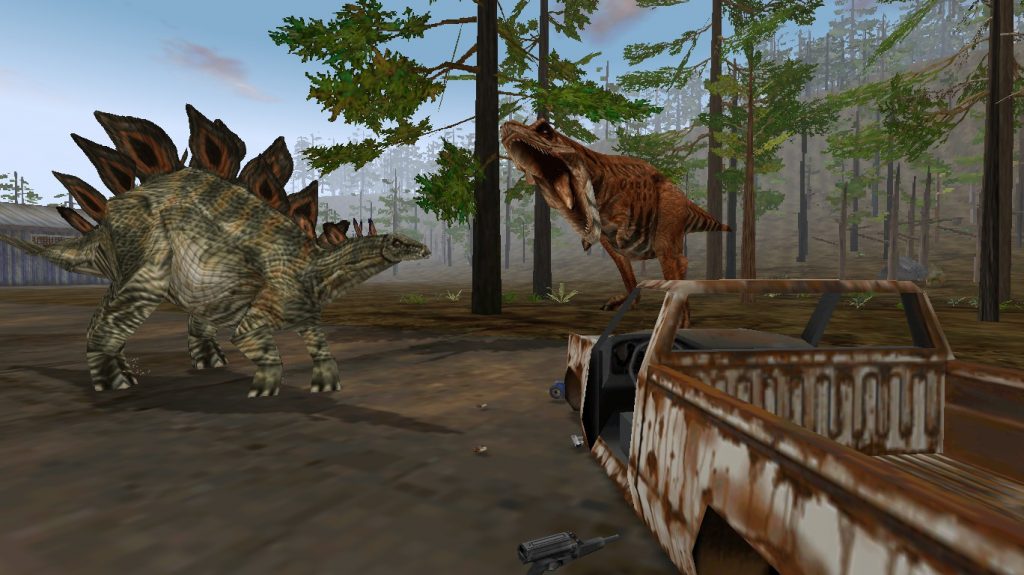
As former Looking Glass heavies, Blackley and Grossman brought with them that same trademark ambition. Their erstwhile studio was largely responsible for bringing some of the smartest, richest and most unique games to market. Ultima Underworld and System Shock still resonate today, both benchmarks of immersion. If there were people ready to make good on the possibilities of something like Trespasser, it was going to be somewhere in or around camp Looking Glass.
An interesting tidbit occurred in relation to id Software’s Quake, which released about the same time as Trespasser started development. Though heralded by critics as universally groundbreaking, the DreamWorks Interactive team were alleged to have been very critical of what they saw as a celebration of stagnation. Quake was everything gamers been playing since Wolfenstein 3D. A repackaging of finding keys and weapons and doorways. Nothing innovative, nothing particularly new.
I wouldn’t wholly agree with the sentiment, but it is hard not to appreciate the Trespasser raison d’être. Be that next Ultima Underworld. Push the boundaries. Change the genre, if not the whole medium. A fully-realised, fully-immersive simulation; the likes of which had only been hinted at prior.
Sunlight angled down through the dusty air in Norman’s office as I leaned against a solid oak table, and outlined my plans for International Genetic Technologies – Hammond
I’d spoken to Dan Schmidt a few years ago, who was left in charge of the excellent but developmentally-laboured Terra Nova: Strike Force Centauri; a similar Looking Glass trademark tale of ‘systems first, see what sticks’. Not an inherently bad approach, but against the realities of funding and release deadlines, that way lies madness. Terra Nova foundered Looking Glass after an extended development cycle, despite the game’s critical acclaim.
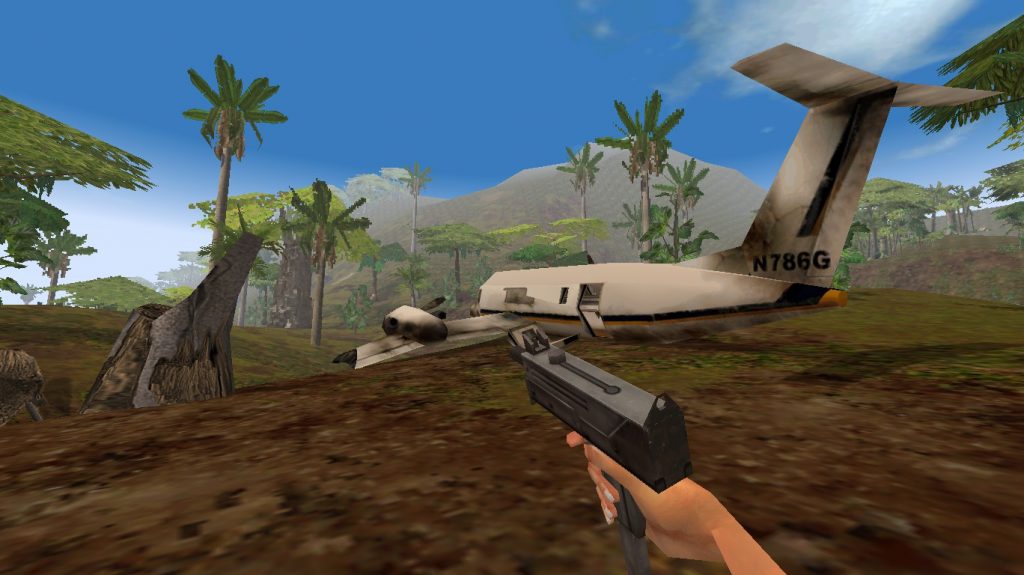
The Trespasser team was luckier, given its wealthy connections. In the words of John Hammond, DreamWorks spared no expense. The Trespasser project was utterly unfettered by publisher concern or oversight. The project went in all directions at once, attempting to make good on the promise of revolutionising the first-person experience, as Ultima Underworld had done before.
But Trespasser slipped delivery date. In a sort of agonised Jurassic Park irony, the dream became a nightmare. Elements weren’t working. The AI was broken. The physics system was cantankerous. The engine leaky and inefficient. The inexperience of the team in managing such an ambitious project, in addition to no publisher interference, turned one of the most promising games of the era into a joke.
Fifty-thousand copies were sold when it eventually limped out the door in 1998, and it was a critical turkey. There’s an Allan Grant dig site riff in there somewhere. Or perhaps even an Ian Malcolm quip about the difference between could and should.
But there’s just something about Trespasser.
A forest this wild, this unknown, has been seen by any human since the great hunters of the early Pliocene – Hammond
Trespasser plays very slowly for a first-person game; very much an adventure first and shooter second. In a post-Dear Esther world accustomed to the pace of the dawdling digital tourist, It might be a lot easier for some to accept the languid speed these days. Of course, that leisurely stroll feels especially geriatric in the face of danger, but that’s Trespasser.
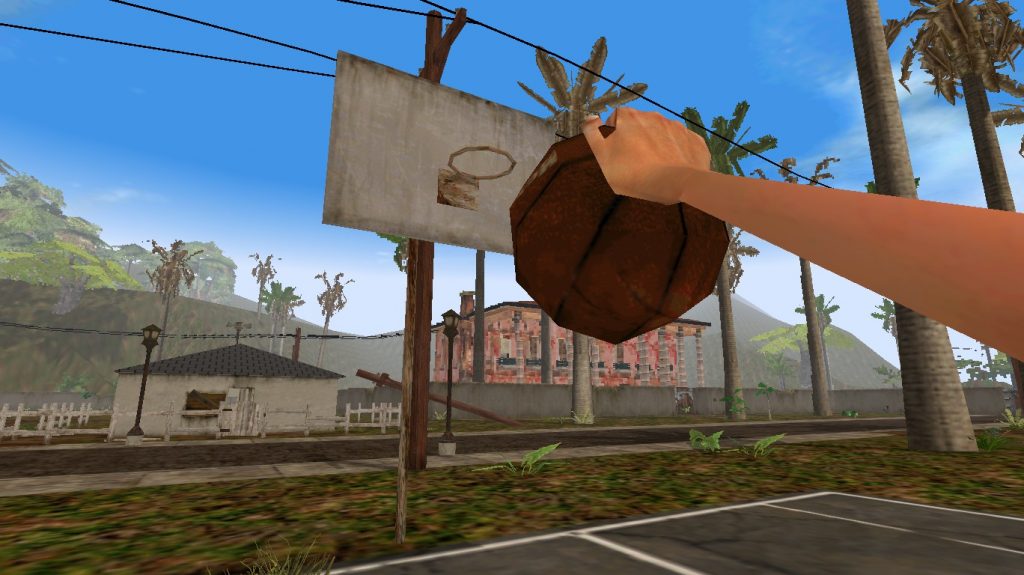
Crash-landing in a small southern inlet on the infamous Site B, Anne guides herself through the remains of a half-built settlement and into the island’s interior. It’s quite an accomplished campaign, with the island’s topography rolling and heaving between the small flat areas partially developed by the ill-fated InGen.
Progression is accompanied by the musings of InGen’s founder John Hammond and Anne, voiced respectively by Richard Attenborough and Minnie Driver. The former recounting the halcyon days of the dinosaur resurrection project, and company’s eventual fall; the latter observing the surroundings and making notes about her current predicament. It’s an atmospheric way to carry a game, feeling more advanced than the modern audio-log crutch. The narration is most effective when tales of triumph are countered by the visible reality of failure. Wandering through the vacant, empty laboratories while Hammond recalls the breakthroughs that occurred there is delightful and haunting.
The first dinosaurs players see are a pair of towering Brachiosaurs, heralded by Hammond commenting on the creatures’ relative age. The only true Jurassic native, such is his proclamation.
This introductory grandeur is immediately neutered by an unconvincing, half-hearted ambulation — one that besets all of Trespasser’s quadrupeds. They move in a sort of prehistoric clockwork, padding around weightlessly; their gargantuan forms often snagging on nearby palms, triggering a confused effort to decouple. Dynamic animation running aground via gross tonnage and an extra set of legs. But then, further up the road, stalks the game’s first velocirator.
A small theropod native to China and Mongolia. Pack hunter, quite vicious, and quite intelligent. – Hammond
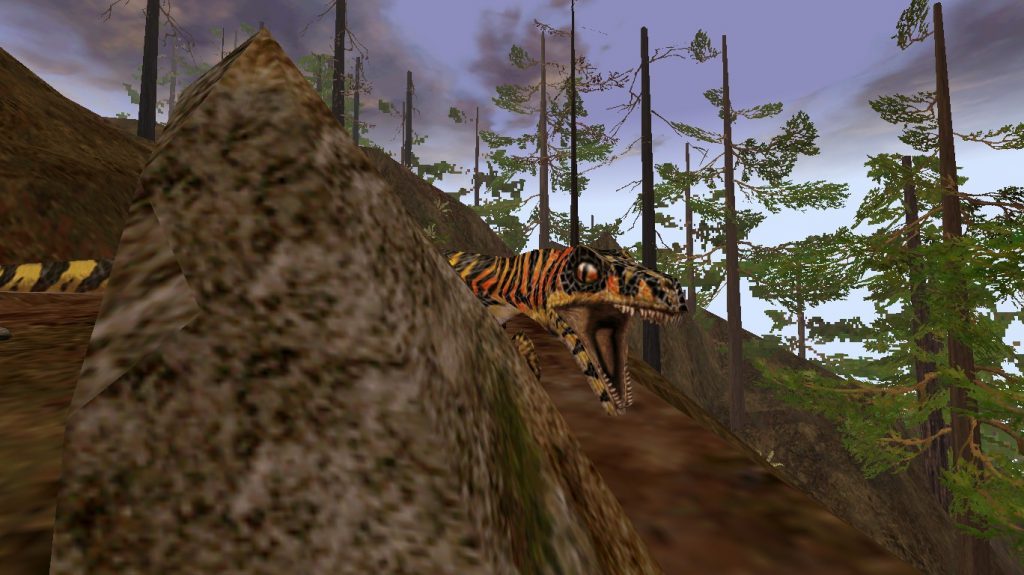
Much like the first and second films, if the Rex is an allegory for primordial power, the velociraptors are a showcase of antediluvian cunning. Sure, they’re subject and fall prey to the oddities of the physics and inverse kinematics, but Trespasser is largely their game. Dressed in their trademark regalia of red and orange, they stalk the vales and settlements of Isla Sorna as the primary threat. While the technology wasn’t there to do justice to their athleticism — no canefield leaping — the raptors move quickly on open terrain, and their size lets them navigate in denser environments without getting hooked on terrain.
This, naturally, calls into the focus this adventure’s most unique aspect. The arm; that single instrument of interaction, the appendage that makes Trespasser Trespasser.
Unlike the telekinetic or canned interactions in today’s games, players do the heavy lifting on Isla Sorna. A held left-click extends Anne’s right arm. With the left mouse button held, you’re free to run hand and arm over anything, with a single right-click issuing a grab. It’s a superbly novel and tactile idea, and despite Anne’s hyper-extensive arm twisting and turning at odd angles, it feels strangely fresh beyond initial frustration, particularly when handling firearms.
Trespasser’s gunplay is like everything else in the game: sodding awkward. But, the more you play, the more you’re likely to come to relish this bizarre setup. You can angle the gun, hold left-click to free-aim, and even use the adjustable distance to peek around corners somewhere. It feels great to force your way, gun-first, through a building’s swinging door.
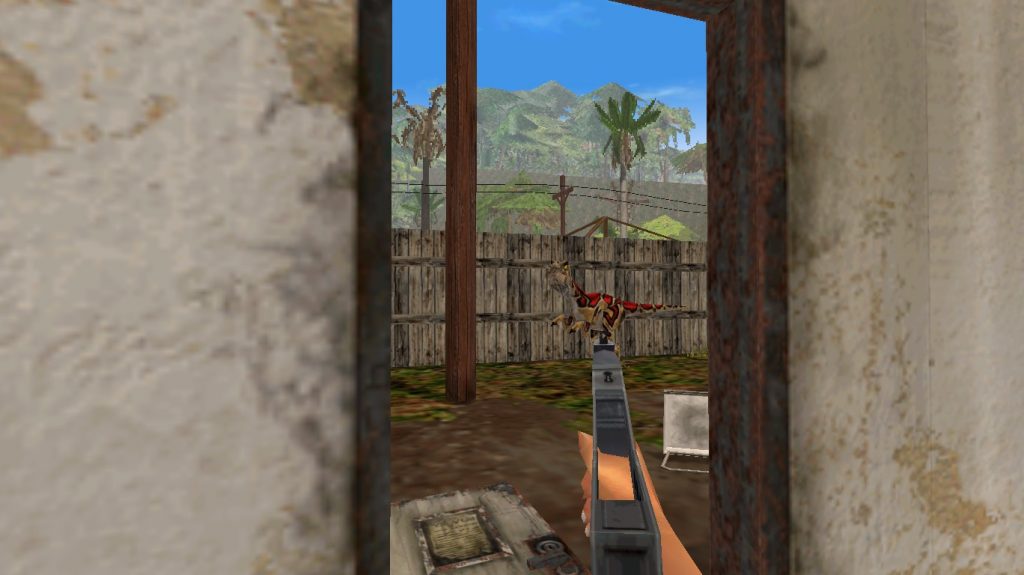
Moreover, Trespasser is also perhaps the most honest approach to firearms that I’ve cared to experience. Elsewhere, John Citizen leaps in minutes from gun-illiterate to a level of proficiency reserved for special forces. Trespasser’s cack-handedness is unnatural, but at the same time, completely engrossing and somewhat fitting. While the reality of coding prevented DreamWorks from bringing in Anne’s left arm, I’m willing to hand-wave the outlandish disregard for wrist-snapping recoil in favour of Trespasser’s HUD-free firefighting freshness.
It was good to be alone. To be nobody for a while – Anne
But you’ll often drop your gun. Or have it snag on a fern. Or fail to pick one up as a raptor barrels down on you. Or spend an inordinate amount of time trying to wrangle a grasped box or plank, only to have Anne fumble the rotation or suffer elastic whiplash. Moments of frustration abound in finicky jumps that just don’t spring on command.
There are a few physics puzzles in Trespasser that can be outrageously persnickety. The repellent algorithm coded up at the dawn of real-time physics remains obtuse and slippery, with surfaces offering not a scintilla of independent friction. Wooden crates – the main indigenous species on Site B – rub with all the gripping power of half-melted ice cubes. Considering how often they’re used for surmounting A to get to B, crate hate is a legitimate pathology.
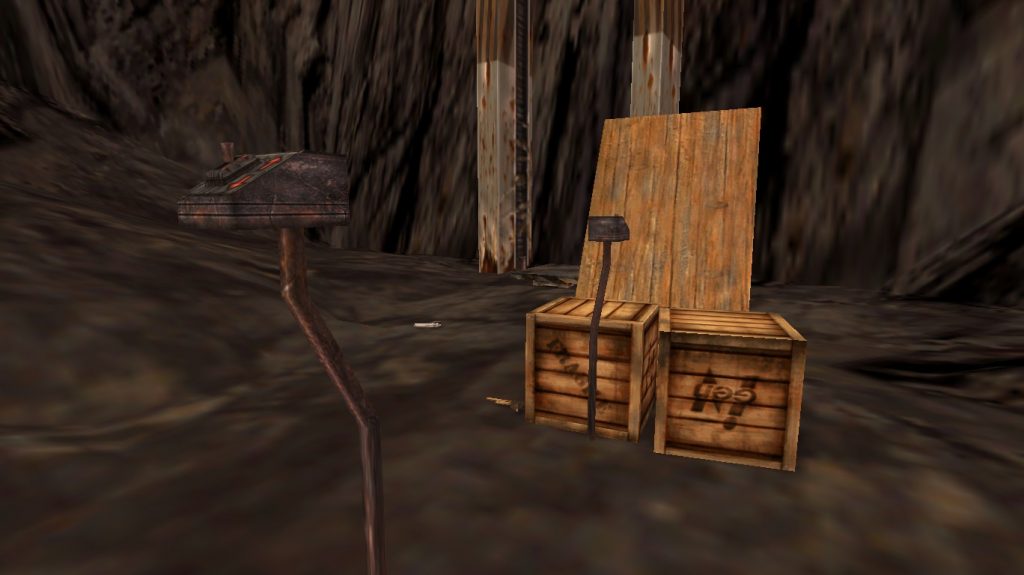
But for all its faults, there’s an immeasurable sense of place to the island, even today.
Trespasser’s Lost World is a treat to wander through. Levels fan and contract in their linearity, much like in the similarly ambitious STALKER. They carry the player from the lowland coastal region in the south, tracking a course through the interior via the carcasses of a partially-built monorail, research stations, a town and harbour. There’s a disused dam clogging the end of a raptor-strewn valley, and a wind farm nestled in the crags of a mountain, its summit the climactic end to the player’s journey.
And then it opened up. The code read true. The barrier of time, for an instant, opened. Nedry and I stared into the monitor, straight back through 65 thousand centuries – Hammond
Throughout, a curious player is rewarded for exploring. Optional audio tidbits are deployed at specific locales, flavourful morsels about Anne’s need to lose herself or Hammond’s unrequited love. Environmental storytelling, then in its relative infancy, bolster these lamentations. A scattering of bones and firearms, Hammond talks about hunting parties from his Kenyan estates. A snoop in the silent incubator room has Anne countering Hammond’s wistful reverence with a frank observation that the facility looked like a freshman’s science lab. The stymied creator and the realist. The game’s atemporal, unconventional conversation is perhaps its crowning achievement.
What sticks in the mind long after surviving Trespasser’s curious, bumbling mix of adventure and action is the fact we really haven’t seen a successor. Despite its undeniable shortcomings — the fallable physics, the frustrating interface, the easily-flummoxed predators — the DreamWorks Interactive team ended up producing one of the most interesting immersive sims the medium has ever seen. There’s a purity to Trespasser that is absolutely undeniable. And while outfits like Valve cite the game as influential to heavy hitters like HalfLife 2, the troubled development and critical floundering is almost too cute an allegory for its source material.
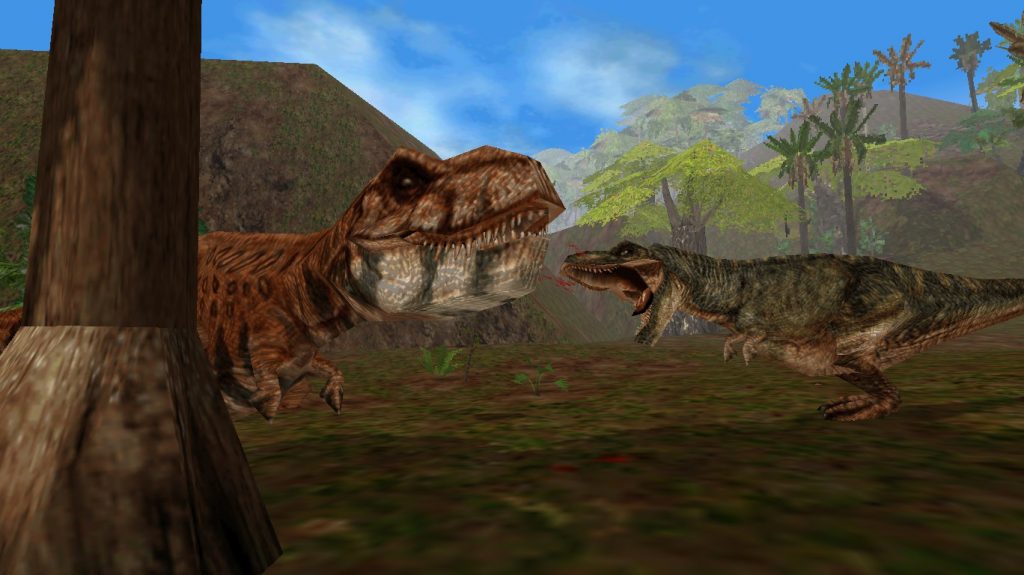
Trespasser. The game that dared to dream, spared no expense, but ended forgotten in ignomy.
If we succeeded, the InGen technology would be historic. We were planning to conquer time’s power over life, its power to extinguish and erase. I would change all our lives, as profoundly, as irrevocably as the atomic bomb.
On that last day I stood apart from the rest of them. The helicopters were setting down. Before me the jungle spread out, and I saw that a savage, primal age had begun again – Hammond
Further Reading:
Postmortem by Trespasser designer Richard Wyckoff
Research Indicates’ Let’s Play analysis
Jurassic Time MP3/video collection of Hammond’s Trespasser narration

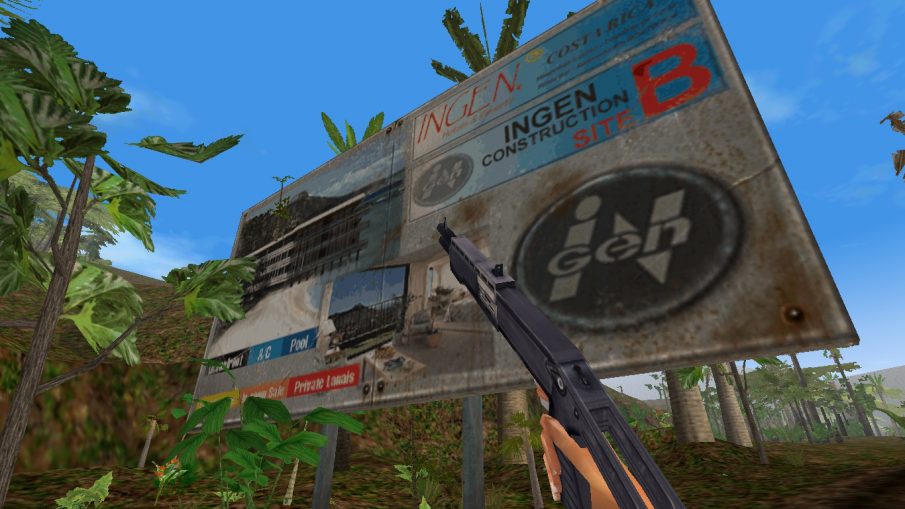

Dear me. Still, it’s technically revolutionary even today. For 1998, it was out of sight. I bet there’s still no other game where Minnie Driver counts down how many rounds she’s got left in her magazine.
That’s another thing I wanted to extol but for brevity; elements of the HUD-less design. That ammo count is magnificent. ‘Feels about half’, ‘two shots left’ etc. Just brilliant.
Should have also touched on the ambient sound design, but it’d end up reading like a Pitchfork review. Suffice to say, very advanced.
Outside of VR, the only thing I can really think of that tries something similar with the weaponry, kind of, is Receiver.
/ejects magazine
/drops magazine
/picks up magazine
/refills magazine
/reloads pistol with full magazine, pulls back slide
/decocks hammer
/ejects magazine
/pulls back slide, stares through empty chamber and magazine well at magazine on floor
/screams
That click-click-sigh as a drone zones in.
Absolutely agree. There’s such tactile physicality to gunplay in both games.